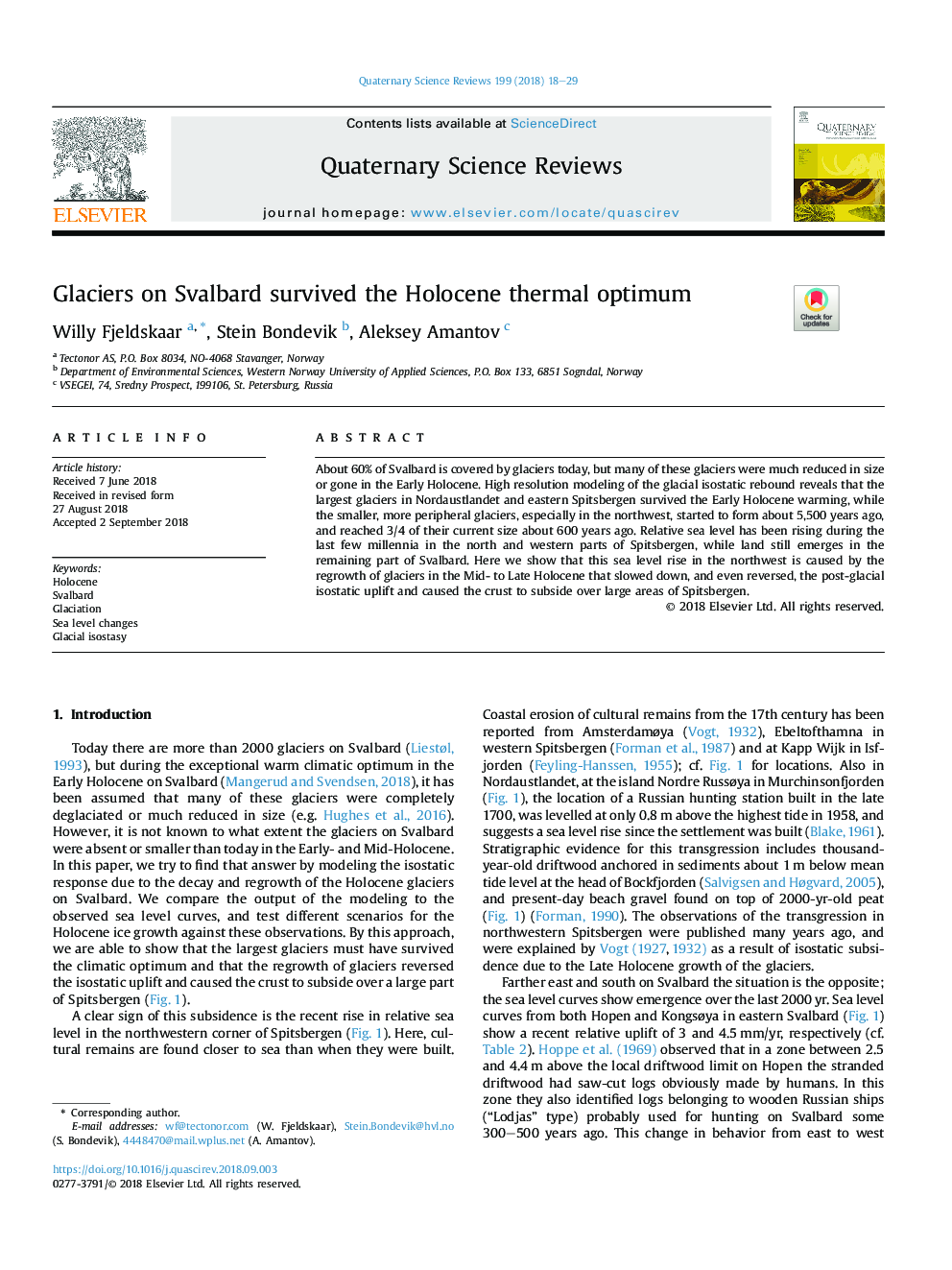| کد مقاله | کد نشریه | سال انتشار | مقاله انگلیسی | نسخه تمام متن |
|---|---|---|---|---|
| 10224393 | 1701102 | 2018 | 12 صفحه PDF | دانلود رایگان |
عنوان انگلیسی مقاله ISI
Glaciers on Svalbard survived the Holocene thermal optimum
ترجمه فارسی عنوان
یخچالهای موجود در سویلبرت از بهترین هولوکوزین حرارت استفاده کردند
دانلود مقاله + سفارش ترجمه
دانلود مقاله ISI انگلیسی
رایگان برای ایرانیان
کلمات کلیدی
موضوعات مرتبط
مهندسی و علوم پایه
علوم زمین و سیارات
زمین شناسی
چکیده انگلیسی
About 60% of Svalbard is covered by glaciers today, but many of these glaciers were much reduced in size or gone in the Early Holocene. High resolution modeling of the glacial isostatic rebound reveals that the largest glaciers in Nordaustlandet and eastern Spitsbergen survived the Early Holocene warming, while the smaller, more peripheral glaciers, especially in the northwest, started to form about 5,500 years ago, and reached 3/4 of their current size about 600 years ago. Relative sea level has been rising during the last few millennia in the north and western parts of Spitsbergen, while land still emerges in the remaining part of Svalbard. Here we show that this sea level rise in the northwest is caused by the regrowth of glaciers in the Mid- to Late Holocene that slowed down, and even reversed, the post-glacial isostatic uplift and caused the crust to subside over large areas of Spitsbergen.
ناشر
Database: Elsevier - ScienceDirect (ساینس دایرکت)
Journal: Quaternary Science Reviews - Volume 199, 1 November 2018, Pages 18-29
Journal: Quaternary Science Reviews - Volume 199, 1 November 2018, Pages 18-29
نویسندگان
Willy Fjeldskaar, Stein Bondevik, Aleksey Amantov,
